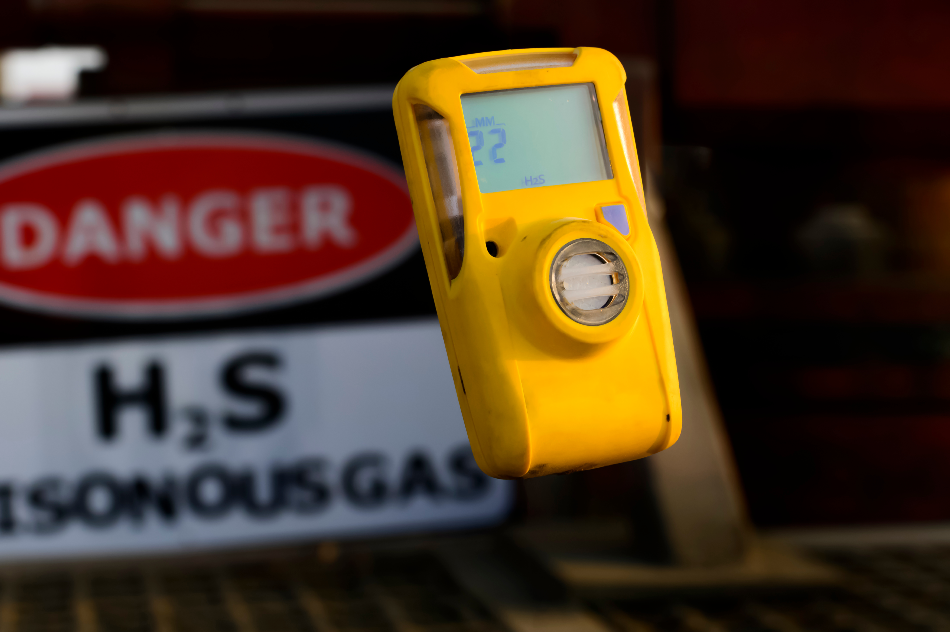In the modern world, industrial processes present many pressing environmental issues. Industrial pollution, emissions from numerous motor vehicles, airplane emissions, and urbanization have all increased the release of harmful gasses into the atmosphere of developed and developing countries. To monitor the levels of toxic, explosive and flammable gasses in an environment, gas sensors are deployed. This article provides an overview of nano-thin films and current research into their application for the development of the next generation of gas sensors.
 Image Credit: P.V.R.Murty/Shutterstock.com
Image Credit: P.V.R.Murty/Shutterstock.com
Nano Thin Films: An Overview
Nano thin films are films of material, having a thickness within the nanometer range. They consist of various substances including carbon nanotubes and metal oxides such as zinc oxide. They are produced in a variety of ways, usually via “bottom-up” approaches such as chemical vapor deposition (CVD) physical vapor deposition (PVD) and atomic layer deposition (ALD.) “Top-down” approaches such as grinding do not produce layers within the required thickness range.
Gas Sensors
Gas sensors are versatile, performing a myriad of roles in the detection of volatile substances in various environments. Common examples of gas sensors include lambda probes, which monitor automotive exhaust fumes, and air quality (AQ) sensors. Lambda probes help in regulating pollution levels by analyzing exhaust gasses, helping to regulate a stoichiometric mixture of fuel and air. Historically, gas sensors were first used in mining.
Gas sensors can also be used to measure toxic or flammable gaseous levels in the atmosphere and oxygen depletion levels. They function by using comparators that are set to a certain level of gas concentration (threshold value) and once the threshold is exceeded, a corresponding potential difference is produced by changing the resistance of the material inside the sensor, which is then measured as output voltage. Thus, the concentration of target gas can be determined.
Applications of Nano Thin Films in Gas Sensors: A New Approach
Nanotechnology provides many advantages for gas sensor development. Nanosized elements require lower levels of power, are faster, can detect gases at a lower limit, are more resistant to heat shock, obviate the need for expensive catalysts, and have potential cost-saving benefits compared to their macro-counterparts.
In the past couple of decades, there have been several research projects published online, exploring potential applications of nano-thin materials in gas sensors.
In 2018, a team led by Kelsey Haddad of Washington University in St Louis, Missouri, explored the application of SnO2 thin layer material to gas sensors for the detection of volatile organic compounds (VOCs) at room temperature. They produced the material via an aerosol chemical vapor deposition process at deposition temperatures ranging from 450 – 600oC, with films grown at 550oC showing the most robust response.
To understand the room-temperature gas sensing mechanisms, they explored the role of exposed surface planes, film morphology, and oxygen defects, which yielded experimental data to be used in the future for better design and application of metal oxide gas sensors, operating at room temperature.
Research by John Bell and Tuquabo Tesfamichael of the Queensland University of Technology also investigated how nano-thin materials could help gas sensors operate at lower temperatures. They investigated sensor materials based on pure and doped tungsten oxide (with the focus being on Fe-doping) depositing it via thermal evaporation and electron-beam evaporation, using a variety of post-deposition annealing.
The research found that the tungsten oxide film detected NO2 at operating temperatures as low as 150oC, with excellent sensitivity at these temperatures. As thin-film semiconductor gas sensors typically operate at temperatures exceeding 400oC, lower temperature operation is desirable, especially for remote area field sensing, as this represents a significant reduction in power consumption.
The goal of the research by Bell and Tesfamichael was to find ways of controlling the sensing process through the engineering of electronic properties and nanostructures of the films. Results of the research demonstrated a relationship between the sensitivity of the material and the crystallinity and nanostructure, which was obtained by the deposition and heat treatment processes, showing promise for this approach.
Another emerging field in nanotechnology is wearable technology. Nano-thin materials based on chemically functionalized graphene oxide are being explored for their use in wearable gas sensors, which has the potential for versatile applications in healthcare, disaster relief, and environmental control.
In Conclusion
Nanotechnology is an emerging field that is showing many potentially exciting possibilities for many different fields. The development of stable, high-quality nano-thin films is a promising area of research that is helping to develop gas sensors of the future, making them more versatile, cost-effective, and able to operate with higher degrees of accuracy and sensitivity.
Sources and Further Reading
Rettig, F, and Moos, R (2013) Semiconducting direct thermoelectric gas sensors Semiconductor Gas Sensors 2013, Pgs. 261-296
https://www.sciencedirect.com/science/article/pii/B9780857092366500071
Bell, J, and Tesfamichael, T (2013) Engineering Thin Film Semiconductor Gas Sensors to Increase Sensitivity and Decrease Operation Temperature – Proceedings of the 8th Pacific Rim International Congress on Advanced Materials and Processing pp 1917-1928
https://link.springer.com/chapter/10.1007/978-3-319-48764-9_239
Sharma, S, and Madou, M (2012) A New Approach to gas sensing with nanotechnology Philosophical Transactions of the Royal Society A 370, 2448-2473
https://royalsocietypublishing.org/doi/pdf/10.1098/rsta.2011.0506
Haddad, K et al. (2018) SnO2 Nanostructured Thin Films for Room-Temperature Gas Sensing of Volatile Organic Compounds ACS Appl. Mater. Interfaces Vo. 10, Issue 35 pp 29978-29981
https://pubs.acs.org/doi/10.1021/acsami.8b08397
Kang, M et al. (2018) Highly sensitive and wearable gas sensors consisting of chemically functionalized graphene oxide assembled on cotton yarn RSC Advances Issue 22
https://pubs.rsc.org/en/content/articlelanding/2018/ra/c8ra01184b#!divAbstract
Disclaimer: The views expressed here are those of the author expressed in their private capacity and do not necessarily represent the views of AZoM.com Limited T/A AZoNetwork the owner and operator of this website. This disclaimer forms part of the Terms and conditions of use of this website.